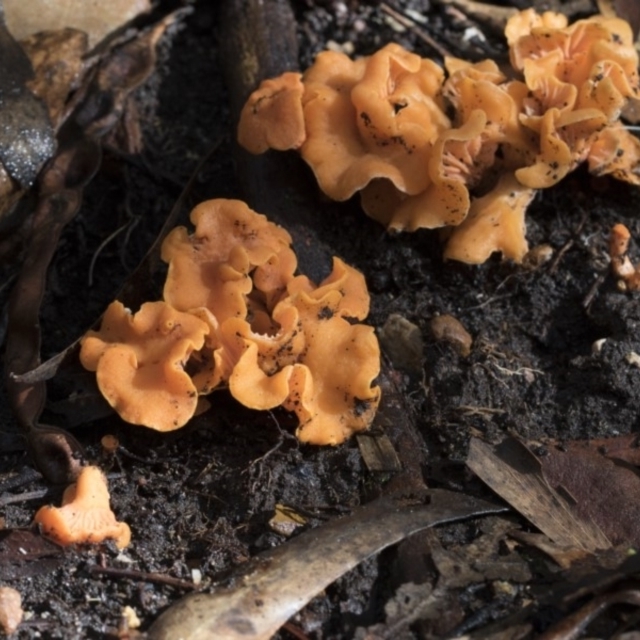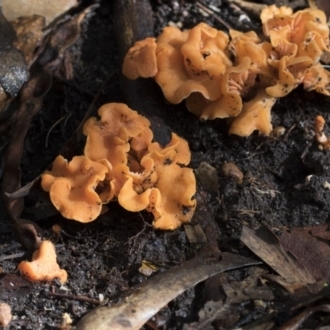Cantharellus sp.
The fruitbodies are very much mushroom-like and generally no more than a few centimetres in height or breadth. The cap is commonly somewhat funnel-shaped (sometimes a very shallow funnel) and often with a wavy margin rather than a neat, circular one. The whole fruitbody is more or less uniform in colour (albeit sometimes with a little variation in intensity) and this may be some shade of ochre, yellow, orange or pinkish. Around Canberra you are likely to see a pinkish-orange to apricot coloured species.
If you read about Cantharellus in a fungal guide you are likely to see terms such as false gills or gill folds used to describe what you see on the underside of the cap. Look closely and you may see little more than wrinkles or low ridges (or the odd smooth-surface Cantharellus). However, the technical differences between false and true gills are irrelevant here. Apart from some oddities, Cantharellus fruitbodies are superficially gill-like on the underside and so, for practical reasons, the genus is grouped with the ‘proper’ mushrooms on Canberra Nature map.
Spore print: white
Generally on soil.
Species of Cantharellus are known collectively as chanterelles.
Look-alikes
There are various genera with species that produce somewhat similar small, colourful, funnel-shaped mushrooms, in particular: Clitocybe, Hygrocybe, Mycena and Omphalina s.l.
Reference
Eyssartier, G. & Buyck, B. (2001). Notes on the Australian species described in the genus Cantharellus (Basidiomycetes), Australian Systematic Botany, 14, 587-598
Cantharellus sp. is listed in the following regions:
Canberra & Southern Tablelands
Species information
- Cantharellus sp. Scientific name
- Common name
- Not Sensitive
- Local native
- Non-invasive or negligible
- 585.8m to 645.1m Recorded at altitude
- Machine learning
Location information
-
Maps
ANBG Aranda Bushland












